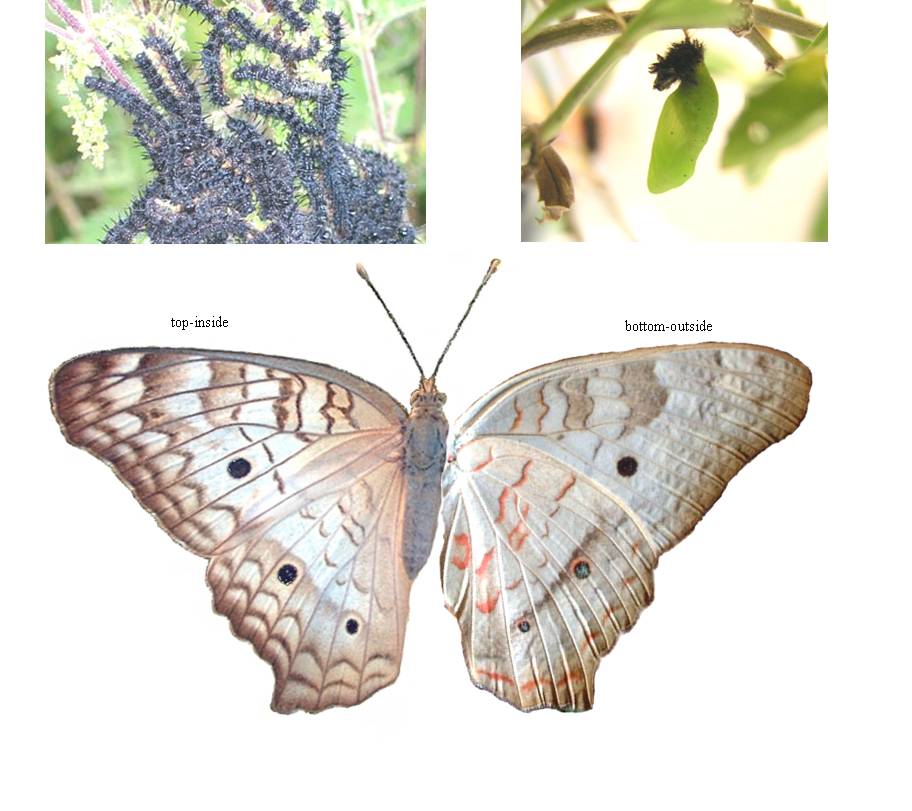

White Peacocks are commonly found in warm, open weedy areas such as fields and parks where water is abundant. Adult butterflies are also often seen patrolling lawn areas. It ranges in South Texas and South Florida. Strays north to Kansas and Massachusetts and also much of the tropics. The White Peacock flies year-round except in very cold weather. They range in size from 2.01 to 2.76 in.
Eggs are pale yellow, laid on various host plants including ruellia and water hyssop (Bacopa monniera). Caterpillars are black and spiny, with silver spots. Often the caterpillars swarm and can totally denude a plant. Chrysalis light green, darkening with age.
The upper side of the adult butterfly is white and contains a round black spot with a light-to-dark brown crescent-shaped trim on forewing. The hindwing has two spots similar to those on the forewing and is trimmed with the same crescent trim in brown to orange. The two front legs are non-functioning, giving the appearance of only four legs- characteristic of all members of the Nymphalidae family. In dry or winter seasons, the White Peacock becomes paler and larger.
Males display a unique territorial behavior. Males stake out a territory, typically 15 meters in diameter, that often contains larval host plants. Males perch in this area and aggressively protect it from other insects and other male white peacocks.
Caterpillars require water hyssop (Bacopa monniera) as a food source. As adults, white peacock butterflies feed on shepherd's needle, white hyssop, matchheads, wild Petunias, cordia, casearia and composites.
White Peacock
Anartia jatrophae


